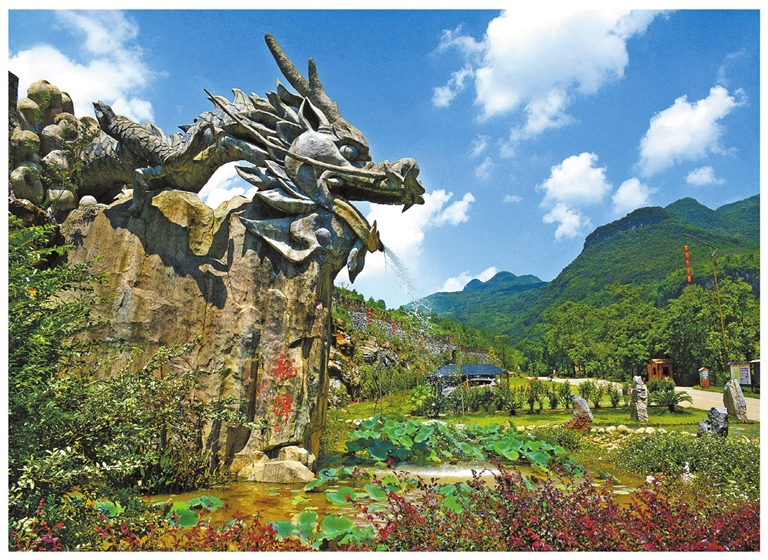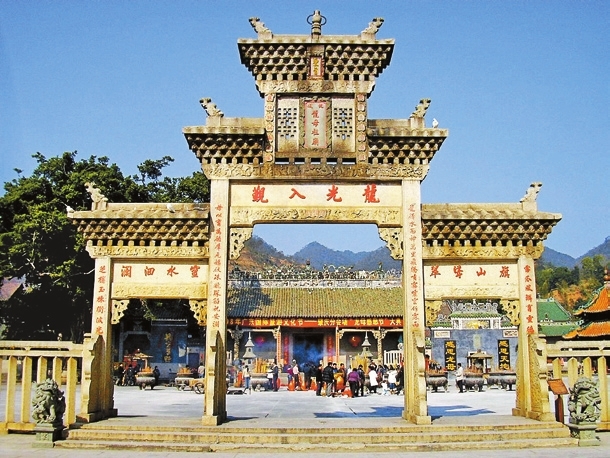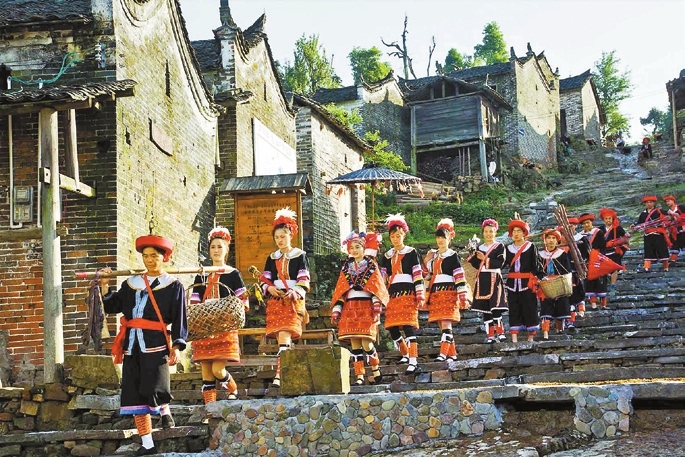



GUANGDONG is a vast province with abundant hidden gems. Here, you will not only encounter thousands of years of history, but can also treat your taste buds to a huge variety of Cantonese delicacies and feast your eyes on rich natural and cultural sites. A list of the “Most Beautiful Counties in China” was released at the 16th China (Shenzhen) International Cultural Industries Fair on Nov. 16 and seven counties and districts in Guangdong were selected, including one in Shenzhen. The core selection standards include rich tourism resources, an ecological environment and culture. Deqing County, Zhaoqing Located in Zhaoqing City, Deqing County faces the Xijiang River to the south and is separated from Yunan County and Yun’an District of Yunfu City by the river. It is home to a number of renowned tourist sites. The Panlong Gorge Scenic Area, located in the northwest of Deqing County, is a primitive ecological area. It was rated as “the most beautiful place in Guangdong” by Chinese National Geography in 2005. Covering 30,000 mu (20 square kilometers) of land, the long gorge is home to more than 100 waterfalls. There are many ancient trees in the area, including the “living fossil plant” species alsophila podophylla, which has national class-one protection and can be seen everywhere. The Longmu (Mother of Dragons) Ancestral Temple is a 4A tourist site. First built during the Qin (221-206 B.C.) and Han (206 B.C.-A.D. 220) dynasties, the temple enjoys over 2,000 years of history. Together with the Chen Clan Academy in Guangzhou and the Ancestral Temple in Foshan, they are reputed as the “Three Treasures” of Lingnan ancient architecture. The Jinlin Water Village, hidden among mountains and waters, enjoys a history of over 1,700 years. There are many lakes and ponds in the village, and running water flows in front of every household. The village is home to numerous ancient ancestral halls and houses, emanating an antique flavor. Liannan Yao Autonomous County, Qingyuan Liannan Yao Autonomous County is the only place in China where Paiyao (one of the branches of the Yao nationality) live together. It’s also the birth place of the classic song “Yao Dance.” There are many mountains and little flat ground. Known as “nine mountains with half water and half field,” Liannan Yao Autonomous County is home to green mountains and water, with fresh air everywhere. On the hundreds of kilometers of high mountains and hills, you will find Yao villages everywhere, hence the name “Hundred Kilometers of Yao Mountains.” The Nangang Thousand-year Yao Village, as the largest, oldest and best preserved Yao minority village in China and even in the world, was built on limestone hills, some 800 meters above sea level. It was built in the Song Dynasty (960-1279) over a thousand years ago and covers an area of 11 hectares with its well-arranged houses and flagstone roads intertwining. During its peak, the village consisted of over 700 houses, 1,000 households and 7,000 people. With a novel design, the Guangdong Yao Ethnicity Museum was constructed to the standards of national grade III museums. The majestic appearance of the museum incorporates cultural elements including the red headscarf of Yao people, the stilted building and the long drum. Dapeng New Area, Shenzhen Located in the southeast of Shenzhen, Dapeng New Area is surrounded by the sea on three sides and is adjacent to Daya Bay on the east, Huizhou City on the northeast, and Dapeng Bay on the west. Among the 56 beaches in Shenzhen, 54 of them are in Dapeng, including Xichong, one of the eight most beautiful coastlines in China. The Shenzhen Dapeng Peninsula National Geopark is located in the center of Dapeng Penisula. The Geopark Museum, which covers 5,410 square meters, is the most popular site at the park. There are six exhibition halls at the museum that introduce volcanic landforms, coastal scenes and minerals in Dapeng and its geological environment. Dapeng New Area is also a historical root of the young city of Shenzhen. The New Stone Age ruins found in Xiantouling in Dapeng indicate that humans inhabited the area at least 6,700 years ago. It was rated as one of the “Major Archaeological Discoveries in China in 2006.” The area is also home to the Dapeng Ancient Fortress, a coastal military fort with 600 years of history. The fortress covers an area of about 110,000 square meters, where you can see antique city gates, castle towers, ancient streets, and traditional folk houses. (Chen Xiaochun) | 
